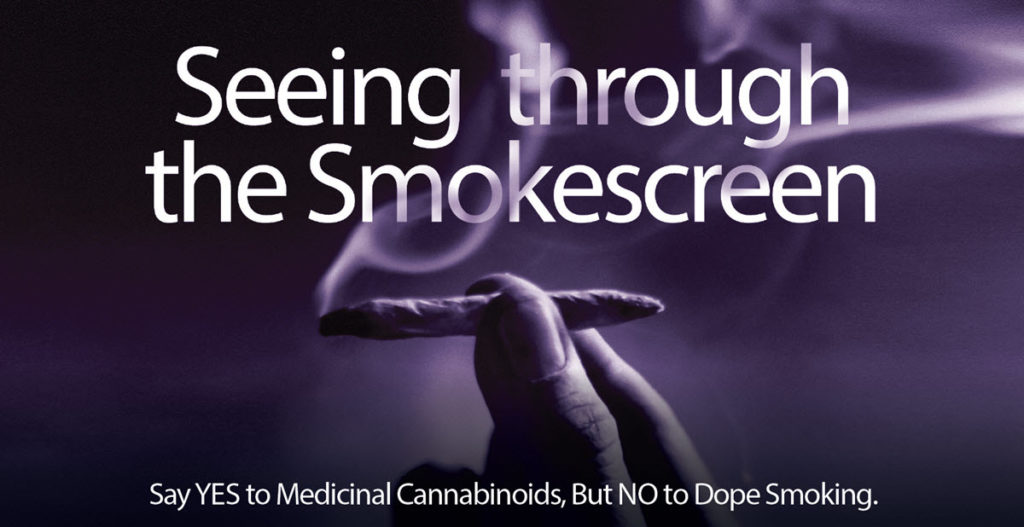

Download this Briefing Paper
WHAT DOES THE RESEARCH SHOW?
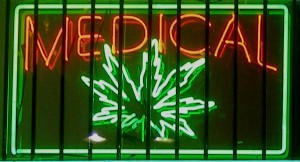 In January 2017, a committee of top scientists appointed by the National Academies of Sciences, Engineering, and Medicine (NAS) issued a landmark report on the health effects of marijuana, both therapeutic and harmful. The NAS committee reviewed 10,700 abstracts of marijuana studies conducted since 1999, when it issued its last report on marijuana science.
In January 2017, a committee of top scientists appointed by the National Academies of Sciences, Engineering, and Medicine (NAS) issued a landmark report on the health effects of marijuana, both therapeutic and harmful. The NAS committee reviewed 10,700 abstracts of marijuana studies conducted since 1999, when it issued its last report on marijuana science.
For therapeutic use, it finds that oral cannabinoids, but not marijuana, are effective for only two conditions: adults with chemotherapy-induced nausea and vomiting and multiple sclerosis (MS)-related spasticity. Oral cannabinoids, and in a handful of studies smoked or vaporised research-grade marijuana, have been shown to relieve symptoms of certain kinds of pain. For these three conditions, the effects are modest, says the committee. “For all other conditions evaluated, there is inadequate information to assess their effects”, including epilepsy and other conditions.[1]
They say: “Conclusive evidence regarding the short- and long-term health effects— both harms and benefits— of cannabis use remains elusive.”
Two other research reviews just published[2] find only low-quality evidence that cannabis may help nerve pain and this wasn’t for smoking pot – it was for oral mixtures sprayed into the mouth. No other realm of medicine considers “smoking” therapeutic. For example, we don’t smoke opium to get the benefits of morphine.
An earlier 2015 report[3] which reviewed findings from 79 different studies concluded that there was low-quality evidence suggesting that cannabinoids were associated with improvements in nausea and vomiting due to chemotherapy, weight gain in HIV infection, sleep disorders, and Tourette syndrome. There was moderate-quality evidence to support the use of cannabinoids for the treatment of chronic pain and spasticity. But cannabinoids were associated with an increased risk of short-term adverse events.
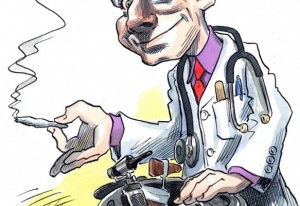 In an editorial[4] accompanying this study, Dr. Deepak Cyril D’Souza, a psychiatrist with Yale University’s School of Medicine, says that legalising marijuana for medical use may be jumping the gun before good quality evidence is in, and that if a pharmaceutical company, for example, wanted to get a drug approved for a medical condition and they only submitted anecdotal data, there’s absolutely no chance that that drug would be approved. And the big question, he says, is how routine daily use – the way one might use marijuana to treat a medical condition – affects the body and the brain over the long term. Concerns have been raised about memory loss, panic, paranoia and other severe disorders.
In an editorial[4] accompanying this study, Dr. Deepak Cyril D’Souza, a psychiatrist with Yale University’s School of Medicine, says that legalising marijuana for medical use may be jumping the gun before good quality evidence is in, and that if a pharmaceutical company, for example, wanted to get a drug approved for a medical condition and they only submitted anecdotal data, there’s absolutely no chance that that drug would be approved. And the big question, he says, is how routine daily use – the way one might use marijuana to treat a medical condition – affects the body and the brain over the long term. Concerns have been raised about memory loss, panic, paranoia and other severe disorders.
Professor John Whitehall is Foundation Chair and Professor of Paediatrics and Child Health at the University of Western Sydney, and Associate Professor in the School of Public Health and Tropical Medicine at James Cook University. He warns:
“Can marijuana prevent fits? Despite the rare but exciting anecdotes, no one knows, because no reliable trials have been published anywhere in the world, according to the reputable Cochrane system of review. The drug has been available for medical purposes, including epilepsy, in California for almost twenty years and is now available in twenty-two US states, but there is nothing to report! Despite repeated claims of “potential” for the drug, there is silence, though all humanity is crying out for better anti-epileptic drugs. This silence could mean there is no convincing effect, or that the doctors who prescribe it have no idea of what is happening to their so-called patients. If it were a miracle drug, it could be expected that the purveyors of marijuana would trumpet statistical success.”[5] (our emphasis added)
Dr Whitehall argues that “anecdotes should not be the basis for medical policy” and says that a similar Queensland bill to the Greens bill coming before the NZ Parliament “subordinates medical standards to an anecdote-wielding lobby.”
The American Epilepsy Society has been opposed to the expanded use of medical marijuana and its derivative, cannabidiol or CBD, in the treatment of children with severe epilepsy. They say, “At this time there is no evidence from controlled trials that strongly supports the use of marijuana for treatment of epilepsy” and that children in Colorado treated with unregulated cannabis oil have had “severe dystonic reactions and other movement disorders, developmental regression, intractable vomiting and worsening seizures that can be so severe they have to put the child into a coma to get the seizures to stop.”[6]
WHAT HAPPENS WHEN MEDICINAL MARIJUANA IS ALLOWED?
 A study released in 2017 in the US and published in the journal JAMA Psychiatry found that marijuana use and marijuana use disorders – in which people use the drug in unhealthy or abusive ways – increased at a “significantly greater rate” in states with medical marijuana laws than in states without the laws.[7] The lead researcher from Columbia University’s Mailman School of Public Health said that these laws seem to send a message that use of this drug is safe and acceptable in some way. They said that possible adverse consequences of illicit cannabis use due to more permissive state cannabis laws should receive consideration by voters, legislators, and policy and health care professionals.
A study released in 2017 in the US and published in the journal JAMA Psychiatry found that marijuana use and marijuana use disorders – in which people use the drug in unhealthy or abusive ways – increased at a “significantly greater rate” in states with medical marijuana laws than in states without the laws.[7] The lead researcher from Columbia University’s Mailman School of Public Health said that these laws seem to send a message that use of this drug is safe and acceptable in some way. They said that possible adverse consequences of illicit cannabis use due to more permissive state cannabis laws should receive consideration by voters, legislators, and policy and health care professionals.
Dr Gregory Pike is a Bioethicist, Director of the Adelaide Centre for Bioethics and Culture (ACBC), Chairman of the Board of the Australian Drug Treatment and Rehabilitation Programme, and a member of The Institute on Global Drug Policy. He warns;
“…changing the image of cannabis by promoting it as medicine is powerful. There doesn’t need to be much nuance in the idea that medicines are good and abstracted from that nasty business of ‘illicit drugs’. The latter wreck lives whereas the former heal people. The image change gets into the collective consciousness and people start to think differently, gradually allowing a medical paradigm to overtake even strong contrary evidence of harm.” [8]
A 2012 study by Columbia University found that states with medical marijuana laws had higher rates of use, abuse and dependence.[9]
WHAT’S THE ULTIMATE GOAL?
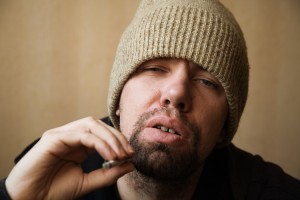 By negotiating a referendum on marijuana in the new government’s coalition agreement[10], the Green party have done us all a favour by declaring the true intention of many marijuana campaigners – full legalisation for recreational use. Groups like NORML have used medicinal marijuana[11][12] and decriminalisation[13] as a ‘smokescreen’.
By negotiating a referendum on marijuana in the new government’s coalition agreement[10], the Green party have done us all a favour by declaring the true intention of many marijuana campaigners – full legalisation for recreational use. Groups like NORML have used medicinal marijuana[11][12] and decriminalisation[13] as a ‘smokescreen’.
A report released in March 2017 – “Tracking the Money That’s Legalizing Marijuana and Why It Matters”[14] – exposes the groups and the amount of money used either to fund or oppose ballot initiatives legalising medical or recreational marijuana in 16 U.S. states. It reveals three billionaires – George Soros, Peter Lewis and John Sperling – contributed 80% of the money to medicalize marijuana through state ballot initiatives during a 13-year period, with the strategy to use medical marijuana as a runway to legalised recreational pot. A medical marijuana industry has emerged to join the billionaires in financing initiatives to legalise recreational pot.
‘Medicinal’ marijuana is being used to manipulate society’s compassion for people with serious pain and health concerns. But marijuana will then be diverted from medical programs to ‘recreational’ purposes. A recent study examining recreation and reported medicinal users of cannabis found that 86% of those reporting medicinal use also used cannabis recreationally.[15]
DEFINING THE DEBATE
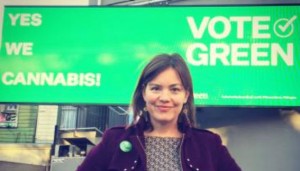 In a recent article in the Journal of the NZ Medical Association[17], the authors – both addiction psychiatrists – said that the discussion between the legal framework of cannabis and the medicinal framework of cannabinoids should be kept separate to prevent the ‘decriminalisation’ of cannabis via a medical route, and that “the use of medicinal cannabinoids needs a dialogue that clearly differentiates it from the dialogue about the legal status of cannabis.”
In a recent article in the Journal of the NZ Medical Association[17], the authors – both addiction psychiatrists – said that the discussion between the legal framework of cannabis and the medicinal framework of cannabinoids should be kept separate to prevent the ‘decriminalisation’ of cannabis via a medical route, and that “the use of medicinal cannabinoids needs a dialogue that clearly differentiates it from the dialogue about the legal status of cannabis.”
They recommended relabelling the discussion as being about “medicinal cannabinoids, not cannabis.” One of their key proposals is:
“It is hard to justify a place for a smoked medication, in light of the serious public health harms related to smoking and availability of other methods of delivery. For this reason, the authors would not recommend continuing a debate about the use of smoked medicinal cannabinoids.” (our emphasis added)
NO TO ‘MEDICINAL MARIJUANA’…
YES TO ‘MEDICINAL CANNABINOIDS’ PRODUCTS
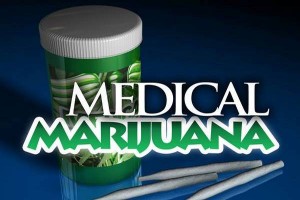 There should be legitimate and responsible scientific research on the potential benefits and risks of medicinal cannabinoids. Neurologists, palliative care and pain specialists should have a key role in this process.
There should be legitimate and responsible scientific research on the potential benefits and risks of medicinal cannabinoids. Neurologists, palliative care and pain specialists should have a key role in this process.
Family First is supporting the rapid expansion of further quality research into the components of the marijuana plant for delivery via non-smoked forms, and the establishment of a programme that allows seriously ill patients to obtain other non-smoked components of marijuana approved and listed by the Ministry of Health via their doctor – with appropriate funding and pricing for patients.[16]
We support the previous government’s cautious and researched approach around this issue, and we also support a compassionate response to those in real need. But the Green’s private members bill fails the test in terms of public health, public safety, and protecting our young people. No other medicine is lit up and inhaled.
QUESTIONS & ANSWERS
But what about people who need marijuana for seizures or cancer?
A 2011 Health Select Committee report[18] highlighted that Sativex[19] and Marinol mimic the effects of traditional medicinal cannabis, and is available with a doctor’s prescription. This mouth spray allows for proper titration of dosage and eliminates the major health consequences of inhaling smoke. The presence of CBD also tends to lessen the intoxicating effects of THC. New drugs made from marijuana plant extracts are undergoing clinical trials. The Green’s private members bill is all about letting people smoke or even grow marijuana. This is recreational marijuana masquerading as medicine. There is also Tilray (Canada) and Bedrocan (Netherlands). Ironically, in the 2011 report referred to above, the Green Party minority view argued that there are “alternative methods for consuming cannabis that did not involve smoking.” (our emphasis added)
Shouldn’t people be free to use it as long as they’re not hurting anyone?
Marijuana is harmful. There are too many health risks including the effect of marijuana on cognitive ability, cardiac function and psychosis, and recent research showing that cannabis use during puberty is a major risk factor for schizophrenia. It is psychologically addictive, and it can lead to stronger drugs.
 Won’t it be strictly regulated?
Won’t it be strictly regulated?
No. Anyone with pain, nausea, or muscle spasms could qualify. People can grow it at home. There’s no training for growing, manufacturing, testing or selling it. Employers and schools will have to allow it. The police will struggle to stop it. Local councils won’t be able to prevent it, and parents will struggle to keep it out of their children’s hands.
Is there a responsible way to deal with marijuana use?
Yes. Treat it like the poppy plant from which we get morphine and codeine. Extract anything good from the marijuana plant. Create new prescription drugs that are tested and regulated by the Ministry of Health, prescribed by a doctor and distributed through a pharmacy.
What about people who say marijuana is not as harmful as alcohol or prescription pain medications?
Which one is most harmful isn’t the point. The fact alcohol and prescription drugs are causing harm through abuse doesn’t justify legalising marijuana and causing even more harm.
What’s wrong with legalising a natural plant?
Some plants are harmful or fatal. Cannabis is composed of over 400 chemicals whose quantities vary from bud to bud, even from the same plant, and prediction of composition for prescription is impossible.[20] Because its quality and potency can vary from crop to crop, this varies the drug’s effectiveness in treating illness and the degree to which users experience side-effects. Laws that restrict them are for the public good. For instance, it is illegal to grow poppy plants and make heroin or grow the coca plant and make cocaine.
QUOTES
 “The push for medicinal cannabis appears to be driven more by popular demand and pro-recreational cannabis law reform advocacy than by medical science… The framework for the approach to medicinal cannabis should be consistent with that for medicines, and kept separate from debate about the legal status of cannabis for recreational use. Doctors should not be enablers for the recreational use of cannabis… Given the possible harms associated with smoking cannabis and the availability of other modes of administration, it is difficult to justify a place for smoked cannabis as a medicine.”
“The push for medicinal cannabis appears to be driven more by popular demand and pro-recreational cannabis law reform advocacy than by medical science… The framework for the approach to medicinal cannabis should be consistent with that for medicines, and kept separate from debate about the legal status of cannabis for recreational use. Doctors should not be enablers for the recreational use of cannabis… Given the possible harms associated with smoking cannabis and the availability of other modes of administration, it is difficult to justify a place for smoked cannabis as a medicine.”
New Zealand Medical Association (November 2017)[21]
“The RACP holds that any access to prescribed medicinal cannabis should be under a very restrictive framework, due to the poor body of data indicating any efficacy, safety or cost efficacy for medicinal cannabis for any indication. Drug diversion and minimising risks of harm (especially in young people), are managed best when access is tightly controlled. Prescription of therapeutics should be evidence based. Given the absence of robust evidence supporting the use of medicinal cannabis, any prescribed medicinal cannabis data under the proposed framework should be collected via clinical trials, registry or otherwise to expand the evidence of medicinal cannabis applications.”
The Royal Australasian College of Physicians (representing 25,000 medical specialists in Australia & NZ)[22]
“Kiwis could be forgiven for thinking cannabis is one such wonder cure as we see and hear very little about its risks and negative effects. This is a gross misrepresentation of the medicinal value of the substance… Underpinning all of this, is the paradox that New Zealand finds itself in right now. How can we tout “Smokefree 2025” while we discuss legalising an inhaled product with more than 100 harmful substances?”
Dr Stephen Child, past chair of NZMA[23]
“We are trying to get marijuana reclassified medically. If we do that… we’ll be using the issue as a red herring to give marijuana a good name.”
National Organization of Marijuana Laws (NORML)[24]
“There is no current scientific evidence that marijuana is in any way beneficial for the treatment of any psychiatric disorder.”
American Psychiatric Association[25]
 “ASAM asserts that cannabis, cannabis-based products and cannabis delivery devices should be subject to the same standards that are applicable to other prescription medications and medical devices, and that these products should not be distributed or otherwise provided to patients unless and until such products or devices have received marketing approval from the Food and Drug Administration. ASAM rejects smoking as a means of drug delivery since it is not safe.”
“ASAM asserts that cannabis, cannabis-based products and cannabis delivery devices should be subject to the same standards that are applicable to other prescription medications and medical devices, and that these products should not be distributed or otherwise provided to patients unless and until such products or devices have received marketing approval from the Food and Drug Administration. ASAM rejects smoking as a means of drug delivery since it is not safe.”
American Society of Addiction Medicine[26]
“The American Cancer Society Cancer Action Network (ACS CAN)… opposes the smoking or vaping of marijuana and other cannabinoids in public places because the carcinogens in marijuana smoke pose numerous health hazards to the patient and others in the patient’s presence.”
American Cancer Society[27]
“Smoked cannabis research studies have not produced enough evidence to assess its safety or effectiveness for treating MS symptoms including spasticity, pain, balance, posture and cognition changes.”
National Multiple Sclerosis Society[28]
“The AAP opposes medical marijuana outside of the usual process by the Food and Drug Administration to approve pharmaceutical products. Only limited research has been conducted on medical marijuana for adults, and there have been no published studies of cannabinoids — either in the form of marijuana or other preparations — that involve children.”
The American Academy of Pediatrics (AAP)[29]
The AMA has called for more research on the subject, with the caveat that this “should not be viewed as an endorsement of state-based medical cannabis programs, the legalization of marijuana, or that scientific evidence on the therapeutic use of cannabis meets the current standards for a prescription drug product.”
The American Medical Association (AMA)[30]
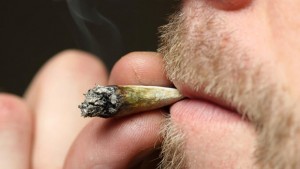 “In the absence of credible data, this debate is being dominated by bad science and misinformation from people interested in using medical marijuana as a step to legalization for recreational use… Young people, who are clearly being targeted with medical marijuana advertising and diversion, are most vulnerable to developing marijuana addiction and suffering from its lasting effects.”
“In the absence of credible data, this debate is being dominated by bad science and misinformation from people interested in using medical marijuana as a step to legalization for recreational use… Young people, who are clearly being targeted with medical marijuana advertising and diversion, are most vulnerable to developing marijuana addiction and suffering from its lasting effects.”
Dr. Christian Thurstone, a psychiatrist board-certified in general, child and adolescent and addictions psychiatry, who serves as an associate professor of psychiatry at the University of Colorado and as medical director of one of Colorado’s largest adolescent substance-abuse-treatment programs[31]
“More research is needed on the basic neuropharmacology of THC and other cannabinoids so that better therapeutic agents can be found.”
World Health Organization[32]
“There is a critical need for robust research on herbal cannabis to identify targets for medical development.”
American Pain Society[33]
“The AAFP recognizes that there is support for the medical use of marijuana but advocates that usage be based on high quality, patient-centered, evidence-based research and advocates for further studies into the use of medical marijuana and related compounds… The AAFP also recognizes that some states have passed laws approving the medical use of marijuana; the AAFP does not endorse such laws.”
American Academy of Family Physicians[34]
——————————
REFERENCE
[1] http://nationalacademies.org/hmd/reports/2017/health-effects-of-cannabis-and-cannabinoids.aspx
[2] https://www.reuters.com/article/us-health-cannabis-pain-ptsd/little-evidence-shows-cannabis-helps-chronic-pain-or-ptsd-idUSKCN1AU2DG
[3] https://jamanetwork.com/journals/jama/fullarticle/2338251
[4] https://jamanetwork.com/journals/jama/article-abstract/2338230
[5] https://quadrant.org.au/magazine/2014/10/comforting-myths-medical-marijuana/
[7] https://jamanetwork.com/journals/jamapsychiatry/article-abstract/2619522
[8] http://www.bioethics.org.au/Resources/other-pdfs/Medical-Marijuana-WWCTU-Convention-May-2013.pdf
[9] Cerda M et al., Medical marijuana laws in 50 states: investigating the relationship between state legalization of medical marijuana and marijuana use, abuse and dependence, Drug Alcohol Depend. 120(1-3): 22-27, 2012
[10] https://www.greens.org.nz/
[11] http://www.nzherald.co.nz/nz/news/article.cfm?c_id=1&objectid=11916060
[12] https://www.parliament.nz/
[13] https://thespinoff.co.nz/society/drug-foundation/05-07-2017/our-politicians-wont-do-it-so-the-drug-foundation-did-a-model-drug-law-for-new-zealand/
[14] https://globenewswire.com/news-release/2017/03/14/936283/0/en/New-Report-by-National-Families-in-Action-Rips-the-Veil-Off-the-Medical-Marijuana-Industry.html
[15] Pacula R, Jacobson M, Maksabedian E. In the weeds: a baseline view of cannabis use among legalising states and their neighbours. Addiction (2016); 111(6):973–980.
[16] http://www.medsafe.govt.nz
[17] https://www.nzma.org.nz/journal/read-the-journal/all-issues/2010-2019/2016/vol-129-no-1445-18-november-2016/7069
[18] https://www.parliament.nz/
[19] http://www.medsafe.govt.nz/profs/riss/Sativex.asp
[20] https://quadrant.org.au/magazine/2016/07-08/capitulating-populism-vested-interests/
[22] https://www.racp.edu.au/docs/default-source/advocacy-library/pa-patient-access-medicinal-cannabis-sa-feedback.pdf?sfvrsn=8
[23] http://www.nzherald.co.nz/nz/news/article.cfm?c_id=1&objectid=11899707
[24] http://www.nationalfamilies.org/
[25] https://psychiatry.org/File%20Library/About-APA/Organization-Documents-Policies/Policies/Position-2013-Marijuana-As-Medicine.pdf
[26] https://www.asam.org/docs/default-source/public-policy-statements/1medical-marijuana-4-10.pdf?sfvrsn=0
[27] https://www.cancer.org/treatment/treatments-and-side-effects/complementary-and-alternative-medicine/marijuana-and-cancer.html
[28] https://www.nationalmssociety.org/Treating-MS/Complementary-Alternative-Medicines/Marijuana/Marijuana-FAQs#question-What-is-the-Society’s-position-on-the-use-of-marij
[29] https://www.aap.org/en-us/about-the-aap/aap-press-room/pages/American-Academy-of-Pediatrics-Reaffirms-Opposition-to-Legalizing-Marijuana-for-Recreational-or-Medical-Use.aspx
[30] https://medicalmarijuana.procon.org
[31] http://drthurstone.com/ma-medical-society-mulls-marijuana-policy/
[32] http://www.who.int/substance_abuse/facts/cannabis/en/
[33] http://americanpainsociety.org/about-us/press-room/american-pain-society-supports-passage-of-marijuana-effective-studies-act
[34] http://www.aafp.org/about/policies/all/marijuana.html
[1] https://www.parliament.nz/en/pb/bills-and-laws/bills-proposed-laws/document/BILL_74308/misuse-of-drugs-medicinal-cannabis-and-other-matters
[2] http://www.newshub.co.nz/home/politics/2017/06/grow-your-own-medical-marijuana-bill-drawn-from-ballot.html
